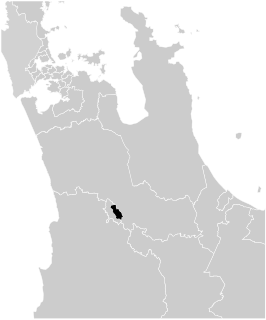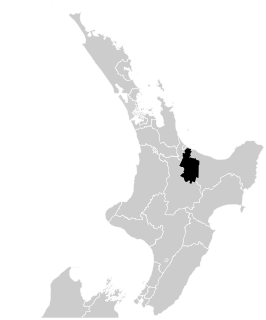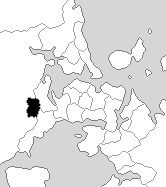Related Research Articles

The 1969 New Zealand general election was a nationwide vote to determine the shape of Parliament's 36th term. It saw the Second National Government headed by Prime Minister Keith Holyoake of the National Party win a fourth consecutive term.

Hamilton East is a New Zealand parliamentary electorate. It is currently held by Jamie Strange MP of the Labour Party.

Hamilton West is a New Zealand parliamentary electorate. It has been held by Gaurav Sharma MP previously of the Labour Party since the 2020 general election. Sharma now sits as an independent and on 18 October 2022, he resigned from parliament, thus triggering a by-election in the electorate.

Rotorua is a New Zealand parliamentary electorate, returning one Member of Parliament to the New Zealand House of Representatives. It was first established in 1919, and has existed continuously since 1954. The current MP for Rotorua is Todd McClay of the National Party, who won the electorate in the 2008 general election from incumbent Labour MP Steve Chadwick.
Hauraki is a former New Zealand parliamentary electorate, from 1928 to 1987 and 1993 to 1996. In the 1987 general election it was renamed Coromandel, the name that had been used from 1972 to 1981. In 1993 it reverted to Hauraki, but became Coromandel again for the first MMP election in 1996.
Waipa is a former parliamentary electorate in the Waikato region of New Zealand, which existed for various periods between 1876 and 1996.
Raglan is a former New Zealand parliamentary electorate. It existed for three periods between 1861 and 1996 and during that time, it was represented by 13 Members of Parliament.
Waimarino was a New Zealand parliamentary electorate that existed from 1911 to 1954, and from 1963 to 1972. It was rural in nature and was represented by four Members of Parliament.
Otahuhu is a former New Zealand parliamentary electorate in the southern suburbs of the city of Auckland, from 1938 to 1963, and then from 1972 to 1984.
King Country was a New Zealand parliamentary electorate. It existed from 1972 to 1996 and was represented by Jim Bolger of the National Party for those 24 years.
Franklin was a rural New Zealand parliamentary electorate. It existed from 1861 to 1996 during four periods.
Kapiti was a New Zealand parliamentary electorate, from 1972 to 1996. A bellwether electorate, it frequently changed between National and Labour.

Birkenhead was a New Zealand Parliamentary electorate on Auckland's North Shore from 1969 to 1996, when it was absorbed into the Northcote electorate.
Papanui is a former New Zealand parliamentary electorate. The electorate was in the northern suburbs of the city of Christchurch, and existed from 1969 to 1984.
Fendalton is a former New Zealand parliamentary electorate. It existed during two periods between 1946 and 1996. The electorate was in the western suburbs of Christchurch, New Zealand. Fendalton is an expensive suburb, and was always represented by the National Party.
Tasman is a former New Zealand parliamentary electorate, from 1972 to 1996.
West Coast is a former New Zealand Parliamentary electorate, from 1972 to 1996.

Henderson is a former New Zealand parliamentary electorate, from 1969 to 1978 and then from 1993 to 1996.
South Canterbury is a former parliamentary electorate, in South Canterbury, New Zealand. It existed for three parliamentary terms from 1969 to 1978.
Waitomo was a parliamentary electorate in the Waikato region and the King Country of New Zealand, from 1919 to 1972. The electorate was represented by four Members of Parliament.
References
- Gustafson, Barry (1986). The First 50 Years : A History of the New Zealand National Party. Auckland: Reed Methuen. ISBN 0-474-00177-6.
- McRobie, Alan (1989). Electoral Atlas of New Zealand. Wellington: GP Books. ISBN 0-477-01384-8.
- Norton, Clifford (1988). New Zealand Parliamentary Election Results 1946-1987: Occasional Publications No 1, Department of Political Science. Wellington: Victoria University of Wellington. ISBN 0-475-11200-8.
- Wilson, James Oakley (1985) [First published in 1913]. New Zealand Parliamentary Record, 1840–1984 (4th ed.). Wellington: V.R. Ward, Govt. Printer. OCLC 154283103.